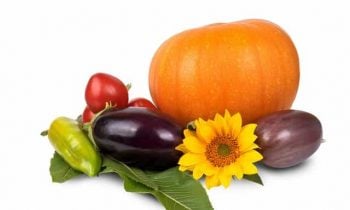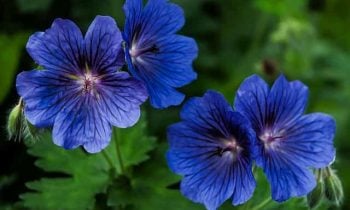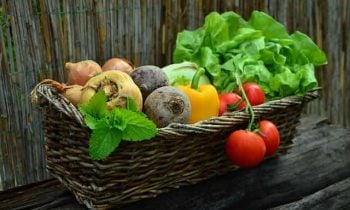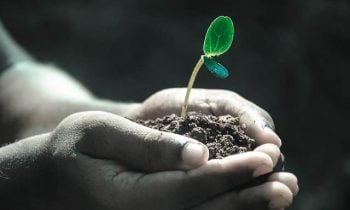Have you ever looked at the soil in your garden and considered it as anything more than soil? If not you should because there is a lot more there than meets the eye. It performs many functions that you may not be aware of and having good quality soil in your garden is essential for your plants. In this article we will look at the functions of soil, what different types there are and finally some ways to make it healthier.
Functions of Soil
The most immediately apparent function of soil is a medium to support plant life. It provides support both physically and biologically. Physical support is provided by allowing the plant to grow its roots through the soil to hold itself in place. Biological support is provided by its ability to hold nutrients and water that the plant needs. It also supports other types of life as well. Microorganisms and insects live in the soil and they in turn aid plant life by helping to decay organic material and adding structure to the soil. Soil allows the growth of food crops which are consumed by humans and also plants used in the creation of medicines. Microorganisms like fungi and bacteria that live in soil and are used to produce antibiotics. All life on earth is dependant on it either directly and indirectly. This includes the plant life in your garden.
What is Soil Made of?
The four major components of soil are mineral matter, organic matter (humus), water and air. Mineral matter refers to the inorganic elements in the soil e.g. stones, gravel and makes up to 40%-60% of its volume. This part of the soil usually originates from the bedrock that lies beneath the soil. Organic matter (humus) is the decayed remains and waste products of plants and animals and has a great effect on the chemical properties of the soil e.g. availability of nutrients. Almost 40%-60% of a soil’s volume can be space and this is occupied by water and air.
Different Types of Soil Texture
Soil texture is defined as the size distribution of different mineral particles. These mineral particles are at their most basic level the following: sand, silt and clay. Sand particles are 2 to 0.05 mm diameter, silt particles are 0.05 to 0.002 mm diameter and clay particles are less than 0.002 mm diameter. Combination of these particles exhibit different properties in soil and some combinations favour plant life better than others. The following are the most common classes of soil texture:
Clay soil
Contains a high percentage of clay particles and feels lumpy to the touch. The small size of the clay particles means that they clump together quite readily and there is less room for air spaces. Consequently clay soils have poor drainage and do not hold nutrients very well. This is a heavy soil and is sticky when wet making it hard to work with. As much as possible you should take steps to improve the drainage of this type of soil. You will learn how later on in this article.
Silty soil
Contains a high percentage of silt particles and feels smooth to the touch. This soil is a well drained soil due to the size of the particles allowing space for water to permeate. This soil holds nutrients more readily than clay soil due to the spaces. It is easy to cultivate but can be compacted quite easily.
Sandy soil
Contains a high percentage of sand particles and feels gritty to the touch, Allows for quite a lot of space in between particles and as a result is very free draining. This has its disadvantages however as it does not hold water and essential nutrients can get washed away.
Loamy soil
This is the best type of soil texture you can have in your garden. This is soil whose properties are controlled equally by the percentages of clay, silt and sand particles. It is well drained but does not loose water too easily as is the case with sandy and sometimes silty soils. The fact that it retains water means it also retains nutrients for your plants to use. It has a great structure and is easy to cultivate.
What Makes a Soil Healthy?
Healthy soil must be fertile and have a good structure.
For a soil to be fertile it must have nutrients readily available and a pH value at a recommended level for the plants that will reside in it. Nutrients that should be available are the essential nutrients nitrogen (leaf growth), phosphorous (root growth) and phosphorous (overall health). As well as the essential nutrients there should also be trace elements like calcium and magnesium. The pH level of the soil refers to its acidity or alkalinity and each plant has its own preferred value range. Plants placed into fertile soil will grow up to be very strong and healthy specimens (that is if other conditions like light levels and climate are favourable as well).
The other determiner of a healthy soil is its texture. We learned about different types of soil texture earlier in this article. Soil having a loamy texture is the healthiest and it should be strived for if at all possible. In general a soil that retain nutrients and allow water and air to permeate it will be beneficial for the life of your plants.
How to Create Healthy Soil
No matter what type of soil you have the addition of organic matter will work wonders for its health. Organic matter is plant and animal residues in varying forms of decomposition. It will replenish the nutrients in your soil and improve its texture. You may have heard countless times about adding your leftovers and glass clippings to a compost heap. This is a great idea as your compost is the best form of organic matter. Compost in an advanced stage of decomposition (dark and without smell) is magic for your soil. It encourages microorganism activity causing soil particles to clump together and form aggregates. The aggregates allows for spaces in the soil therefore increasing its drainage. This is especially beneficial for clay soils, which have poor drainage. Other forms of organic matter are animal manure and peat moss.
If your soil is lacking in nutrients and you don’t have access to a compost heap you have a choice of using inorganic or organic fertilizers. Inorganic fertilizers (inorganic salts, manufactured chemically) can be purchased at your local garden and are applied in a dry form that is raked lightly at the base of a plant or in a liquid form. While inorganic fertilizers will work fine they have a number of disadvantages: they release their nutrients too quickly and there is some evidence to show that plants develop a resistance to inorganic fertilizer methods over time, requiring more and more to achieve the same effect. Organic fertilizers are more in tune with nature because they are created from the remains or by-product of an organism. They act slower but they ‘amend’ the soil rather than the quick ‘feeding’ it like inorganic fertilizers.
The pH of your soil will also affect its fertility. Each plant has its own preferred pH value range.
Soil like a lot of things in the garden requires maintenance. We have learned about the different types of soil texture, what constitutes a fertile, healthy soil and how to create it if it does not exist. The next step is to step out into your garden, take a look at your soil and help your plants out if your soil is of a poor quality. Your plants will thank you ten-fold believe me. Good luck!

 Growing Trend of Organic Gardening
Growing Trend of Organic Gardening Wild Flower Garden
Wild Flower Garden Gardening Vegetable
Gardening Vegetable Planting Seeds
Planting Seeds What is Soil?
What is Soil?